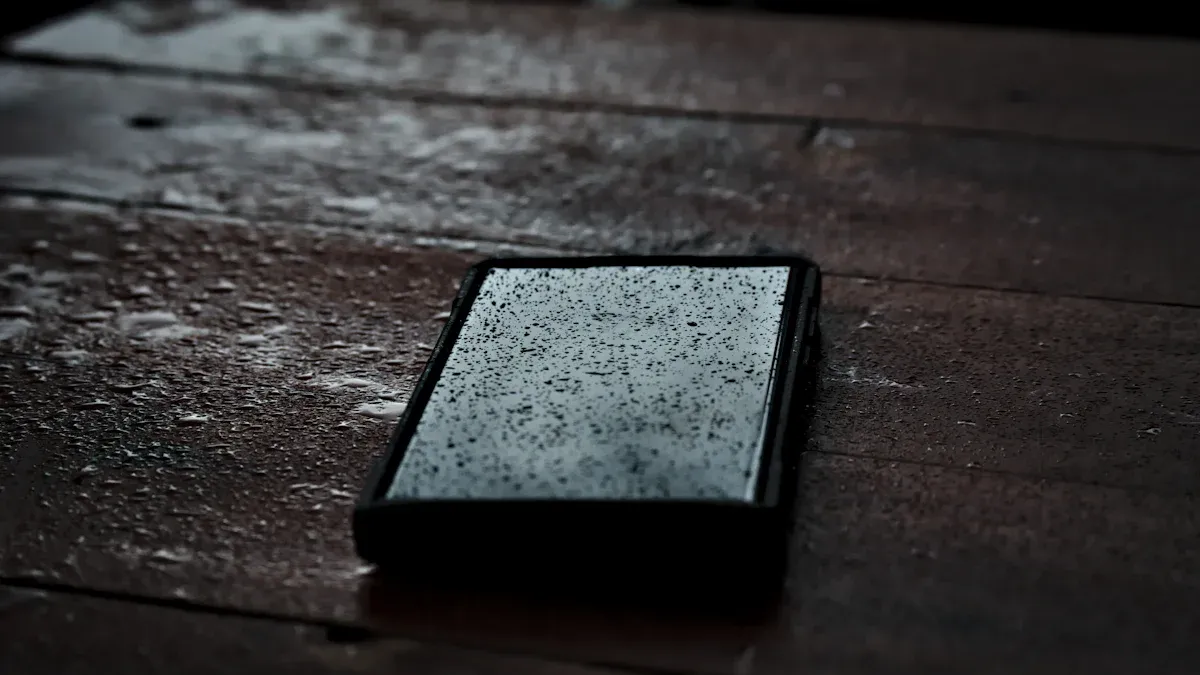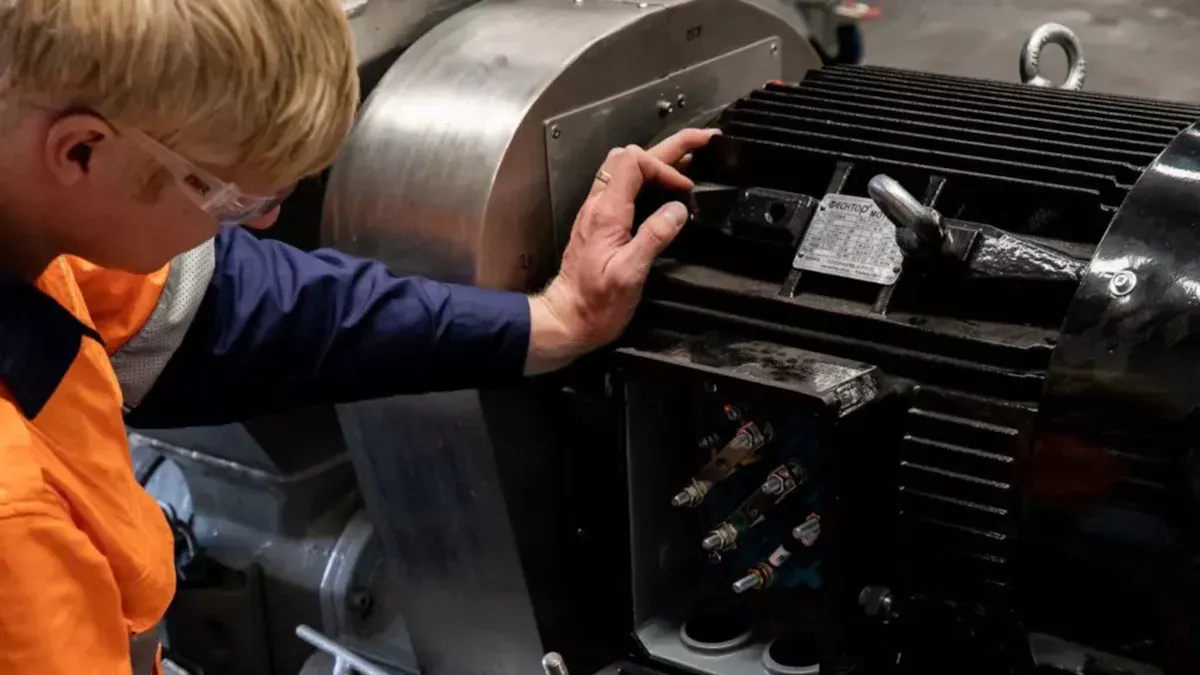
Marine telephones face tough conditions in saltwater environments. Saltwater can cause corrosion, moisture damage, and wear, which can shorten the lifespan of these devices. Regular maintenance is essential to keep them working. Whether it’s a waterproof Industrial Telephone or a mining Explosion Proof Telephone, proper care ensures reliability in harsh conditions.
Saltwater exposure can even affect a rainproof weatherproof telephone or a Marine Industrial Telephone. Without attention, these devices may fail when needed most.
Cleaning and Drying Techniques

Keeping marine telephones clean and dry is essential for their longevity. Saltwater can leave behind harmful residues that damage the device over time. Here’s how to maintain them effectively:
Rinsing with Freshwater After Use
After exposure to saltwater, rinse the telephone with freshwater. This step removes salt and other minerals that can cause corrosion. Use a gentle stream of water to avoid forcing moisture into sensitive areas. For devices like a Marine Industrial Telephone, this simple habit can make a big difference in preventing long-term damage.
Tip: Always rinse the device as soon as possible after use. Delaying this step allows salt to crystallize, making it harder to clean.
Using Non-Abrasive Cleaning Materials
When cleaning, choose soft cloths or sponges. Abrasive materials can scratch the surface, compromising the protective coating. A microfiber cloth works well for wiping down the device. If needed, use a mild soap solution to remove stubborn grime. Avoid harsh chemicals, as they may damage the device’s waterproof seals.
Ensuring Thorough Drying to Prevent Moisture Build-Up
Drying the telephone completely is just as important as cleaning it. Use a lint-free cloth to absorb excess water. Pay special attention to crevices and ports where moisture can hide. For faster drying, consider using a low-heat hairdryer or placing the device in a well-ventilated area. Moisture build-up can lead to internal damage, so don’t skip this step.
Note: Never store the telephone while it’s still damp. Even a small amount of trapped moisture can cause problems over time.
Corrosion Prevention for Marine Industrial Telephone

Corrosion is one of the biggest threats to marine telephones. Saltwater exposure can quickly damage internal components, leading to costly repairs or replacements. Taking proactive steps to prevent corrosion can save time and money while extending the life of your Marine Industrial Telephone.
Applying Protective Coatings or Sealants
Protective coatings or sealants act as a barrier between the device and the harsh marine environment. These coatings are designed to repel water and reduce the risk of corrosion. The growing demand for such solutions highlights their effectiveness. For instance:
- The global protective coating resins market was valued at approximately USD 16,283.4 million in 2021 and is expected to grow to USD 18,445.89 million by 2028.
- The Marine Coatings Market is projected to increase from USD 3.94 billion in 2025 to USD 4.91 billion by 2030, driven by their use in marine environments.
Applying a high-quality sealant to your Marine Industrial Telephone can significantly enhance its durability.
Using Anti-Corrosion Sprays
Anti-corrosion sprays are another effective tool for protecting marine telephones. These sprays create a thin, invisible layer that prevents salt and moisture from reaching the device’s surface. Studies show that advanced coatings, like ultrathin squaraine films, can achieve up to 98% corrosion prevention with just four layers. Regular application of anti-corrosion sprays ensures your device stays protected, even in the harshest conditions.
Avoiding Prolonged Exposure to Saltwater
Minimizing direct contact with saltwater is crucial. While marine telephones are built to withstand tough environments, prolonged exposure increases the risk of corrosion. Whenever possible, keep the device in a dry area or use protective covers. Quick action, like rinsing with freshwater after exposure, can also help reduce damage.
Tip: Combine these methods for maximum protection. A layered approach, including coatings, sprays, and proper handling, ensures your Marine Industrial Telephone stays in top condition.
Regular Inspection and Testing
Regular inspections and testing are essential for keeping marine telephones in top condition. These steps help identify potential issues before they become major problems, ensuring the device remains reliable in demanding environments.
Checking for Physical Damage or Wear
Physical damage can compromise the performance of a marine telephone. Scratches, dents, or cracks may seem minor, but they can weaken the device’s structure over time. Corrosion, for example, can lead to leaks or cracks that pose serious risks. Regularly inspecting the device for visible damage ensures these issues are caught early.
Tip: Pay close attention to areas around ports and buttons. These spots are more prone to wear and tear due to frequent use.
Testing Functionality and Signal Strength
A marine telephone must perform reliably, especially in emergencies. Testing its functionality and signal strength ensures it’s ready when needed. Check if the buttons respond properly and if the audio quality is clear. Signal strength should also be tested in different locations to confirm consistent performance. For devices like a Marine Industrial Telephone, this step is critical to maintaining communication in harsh conditions.
Note: If the signal strength seems weak, consider repositioning the antenna or checking for obstructions that might interfere with connectivity.
Identifying and Addressing Early Signs of Corrosion
Corrosion often starts small but can quickly spread if left unchecked. Using tools like condition monitoring instruments can help detect early signs of corrosion without requiring constant attention. Portable devices, such as the Ferrous Wear Meter, can identify metal particles in oil samples within seconds. These tools make it easier to address issues before they escalate.
Quick action is key. Once corrosion is spotted, clean the affected area and apply anti-corrosion sprays or sealants to prevent further damage.
Software Updates and Maintenance
Keeping marine telephones updated is crucial for their performance and compatibility. Software updates and proper maintenance ensure these devices remain reliable in demanding environments.
Keeping Firmware Up to Date
Firmware updates often include bug fixes, security patches, and performance improvements. Staying current with updates ensures the device operates smoothly and remains secure. Manufacturers frequently release updates to address vulnerabilities or enhance features. Users should check for updates regularly and install them promptly. For a Marine Industrial Telephone, updated firmware can improve its ability to handle harsh conditions and maintain connectivity.
Tip: Set reminders to check for firmware updates monthly. This habit ensures the device stays optimized.
Backing Up Important Data
Data loss can happen unexpectedly due to accidents, malware, or theft. Regular backups protect critical information stored on marine telephones. Whether it’s contact lists, communication logs, or settings, backups ensure nothing important is lost. Here’s a quick look at why backups matter:
| Statistic Description | Percentage/Count |
|---|---|
| Data loss cases caused by accidents | 29% |
| Consumer PCs impacted by malware annually | 10–20% |
| Phones lost or stolen every minute | 113 |
| People who have never created a backup | 21% |
Note: Use cloud storage or external drives for backups. These options provide easy access and added security.
Ensuring Compatibility with Other Marine Equipment
Marine telephones often work alongside other equipment, such as navigation systems or radios. Ensuring compatibility prevents communication issues. Before purchasing or updating a device, users should verify that it integrates seamlessly with existing systems. Testing the telephone with other equipment can identify potential conflicts early. This step is especially important for maintaining smooth operations in marine environments.
Tip: Consult the device manual or manufacturer for compatibility guidelines.
Proper Storage Practices
Proper storage plays a vital role in extending the life of marine telephones. By following a few simple practices, users can protect their devices from unnecessary damage and ensure they remain functional for years.
Storing in a Dry, Ventilated Area
Moisture is one of the biggest enemies of marine telephones. Storing the device in a dry, well-ventilated area helps prevent moisture buildup and corrosion. A location with good airflow reduces the chances of condensation forming on the device. Avoid placing the telephone in enclosed spaces where humidity can accumulate.
Tip: Use silica gel packets or dehumidifiers in storage areas to absorb excess moisture. These small steps can make a big difference in keeping the device dry.
Using Protective Cases or Covers
Protective cases or covers shield marine telephones from dust, scratches, and accidental impacts. They also provide an extra layer of defense against moisture and salt exposure. When choosing a case, look for one specifically designed for marine environments. Waterproof and shockproof cases offer the best protection.
- Benefits of using protective cases:
- Prevents physical damage during transport.
- Keeps ports and buttons free from debris.
- Adds a barrier against environmental hazards.
Note: Always clean the case regularly to avoid trapping dirt or salt inside.
Avoiding Extreme Temperatures
Extreme heat or cold can harm the internal components of marine telephones. High temperatures may cause the battery to overheat, while freezing conditions can make the device brittle. Store the telephone in a location with a stable temperature range.
Reminder: Never leave the device in direct sunlight or near heat sources like engines. Similarly, avoid storing it in freezing conditions for extended periods.
By following these storage practices, users can ensure their marine telephones remain in excellent condition, ready to perform when needed.
Battery Care for Marine Industrial Telephone
Proper battery care is essential to keep your Marine Industrial Telephone running smoothly. Batteries face unique challenges in marine environments, so following best practices can prevent damage and extend their lifespan.
Charging Batteries Correctly
Charging batteries the right way ensures they last longer and perform better. Always recharge the battery to full capacity after each use. This habit helps maintain its longevity. Use chargers with automatic shutoff features to avoid overcharging, which can damage the battery. Also, make sure the charger matches the battery’s voltage requirements.
Here’s a quick guide for different battery types:
- Lead-Acid Batteries: Use a charger designed specifically for this type to handle its power needs.
- Lithium-Ion Batteries: These charge quickly but can be damaged by overcharging. An automatic shutoff charger works best.
- Nickel-Cadmium (NiCd) and Nickel-Metal Hydride (NiMH) Batteries: Monitor these closely to prevent overcharging.
Tip: Always check the manufacturer’s recommendations for charging procedures.
Replacing Batteries When Necessary
Batteries don’t last forever. If you notice reduced performance or shorter usage times, it’s time for a replacement. Using a worn-out battery can strain the device and lead to unexpected failures. Keep a spare battery on hand to avoid downtime, especially during critical operations.
Avoiding Overcharging or Deep Discharge
Overcharging can cause batteries to swell or leak, while deep discharge may lead to cell failure. Both issues can permanently damage the battery. To prevent this, unplug the charger once the battery is full. Avoid letting the battery drain completely before recharging. These simple steps can significantly improve battery health.
Reminder: Regular maintenance and proper charging habits are key to keeping your Marine Industrial Telephone powered and reliable.
Consistent maintenance keeps marine telephones reliable and long-lasting. Proper care prevents damage from saltwater, corrosion, and wear. By following these tips, users can protect their investment and avoid costly repairs.
Remember: A little effort today saves time and money tomorrow. Start applying these practices and keep your marine telephone in top shape!
FAQ
How often should marine telephones be cleaned?
Marine telephones should be cleaned after every use in saltwater. Regular cleaning prevents salt buildup and corrosion, ensuring the device stays functional for longer.
Tip: Rinse with freshwater immediately after exposure! 🌊
Can I use regular cleaning products on marine telephones?
No, avoid harsh chemicals or abrasive cleaners. Use mild soap and a soft cloth to clean the device. This protects the waterproof seals and prevents surface damage.
What’s the best way to store marine telephones?
Store them in a dry, ventilated area with stable temperatures. Use protective cases to shield against dust, moisture, and impacts. Avoid extreme heat or freezing conditions.
Reminder: Add silica gel packets to absorb moisture! 😊


